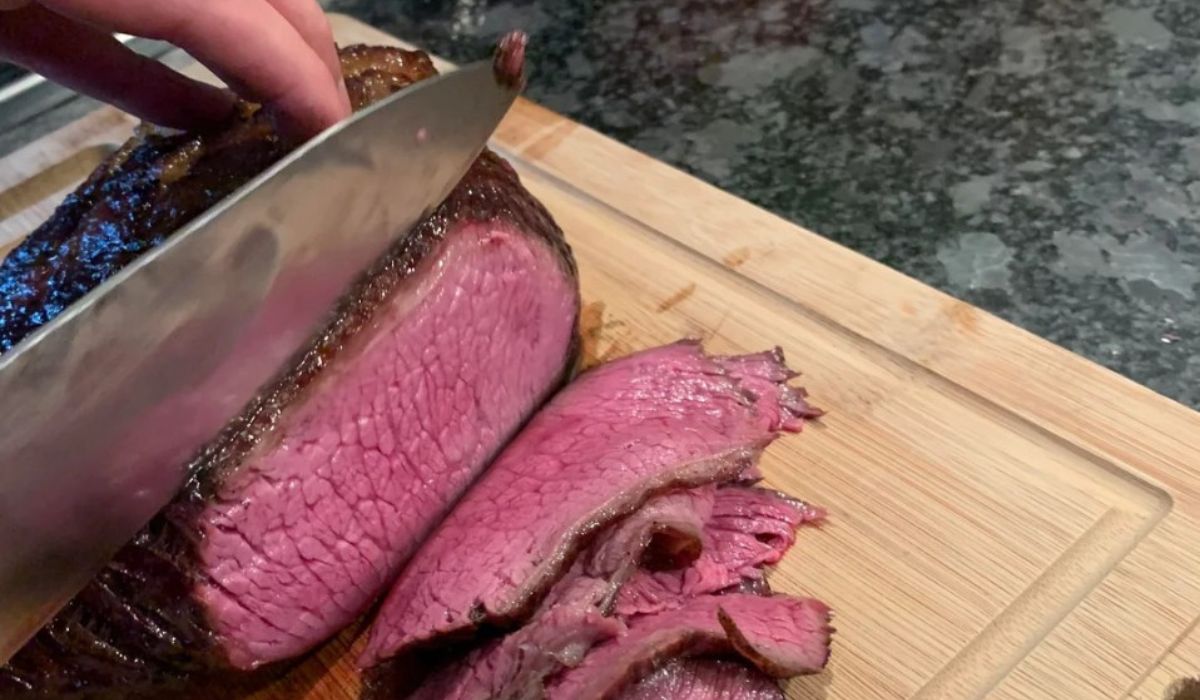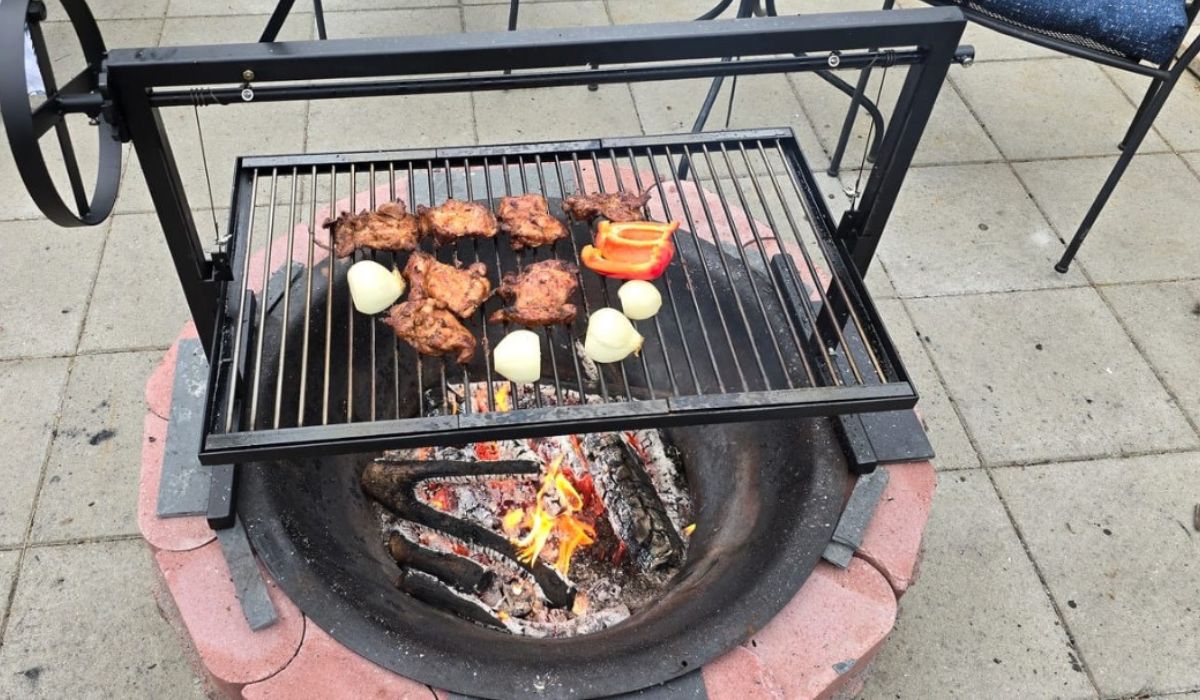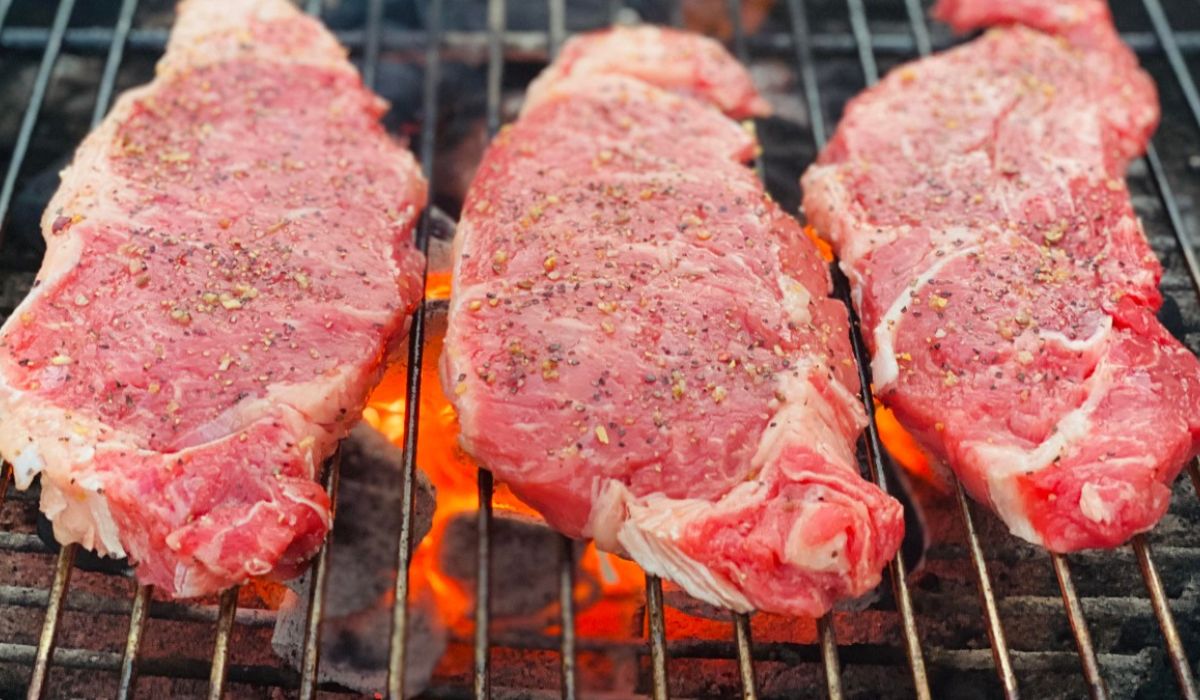
Picanha: The Cut Americans Are Falling in Love With
Some cuts of beef have gained attention in recent years, and the world is a better place for it. Picanha is one of those cuts: lean, yet crowned with a beautiful fat cap that guarantees the juicy, tender results that make every grill lover smile.
But let’s get down to business: how do you cook picanha on the grill to get said results? At Gaucho Life, we have our own take, and we’re here to share it with you.
In this article, we’ll walk you step-by-step through how to grill picanha over argentinian charcoal grill for a truly authentic flavor and a more immersive live-fire experience. We’ll also go over a few simple tips to help you take your grilling skills to the next level.
Ready? Then fire it up!
What Is Picanha and Why Does It Grill So Well
Picanha is a triangular cut widely celebrated across South America and now trending in the U.S. It’s sometimes confused with tri-tip because of a similar shape (also, both come from the rear of the animal), but picanha wears a thick fat cap that makes it noticeably juicier and more flavorful. As that fat renders, it bastes the meat, making picanha such a grill favorite.
In the U.S., picanha is also known as top sirloin cap. It’s typically sold in roughly 2-3 lb pieces with the fat cap left intact. Searing it over high heat, then finishing it over low heat for about 30 minutes, is one of the best ways to grill picanha. The initial sear helps lock in juices, and the gentle finish melts the fat, packing the meat with flavor and juice.
You’ll find picanha on grills all over South America. Especially in Brazil, where it’s a signature cut and commonly cooked over very high heat on skewers. In Argentina, on the other hand, grill masters follow the asado tradition: sear, then low-and-slow finish, both to develop flavor and to tenderize the meat.
Pro tip N° 1→ Were you actually looking for a tri-tip recipe? Here’s our 101 guide to tri-tip on a Santa Maria grill.

Preparing Picanha, Step by Step
At Gaucho Life, grilled picanha is one of our favorite cuts. But writing this guide made us pause and think about how we actually cook it. The thing is that Argentine-style grilling has plenty of technique, a good dose of instinct, and very little that resembles a strict recipe.
Still, any true asador is happy to share a few secrets to help this fire-kissed tradition grow. Here are ours, organized into a simple picanha steak recipe that’s perfect for any special occasion where the grill takes center stage.
Seasoning and Pre-Grill Basics
A great asado begins long before the fire is lit. Choosing quality cuts is essential for great results, and so is preparing the meat properly. Here are a few pre-grill basics to keep in mind:
-
When ordering picanha from your butcher, ask for the top sirloin cap and make sure they leave the fat cap intact.
-
Don’t remove the fat cap when prepping the meat. To help it render evenly, you can score it lightly in a shallow crosshatch pattern.
-
In a traditional Argentine asado, the meat is barely seasoned to let its natural flavor shine. Picanha is seasoned with just a touch of salt to bring out that rich, beefy character.
-
Salt the picanha 40-60 minutes before grilling and let it rest at room temperature. This helps the salt absorb, tenderizes the meat, and deepens the flavor.
-
The salt will draw out some moisture, so pat the surface dry before placing it on the grill.
Pro tip N° 2→ Make sure you have the right tools on hand for a precision cook: long tongs, a coal shovel or poker, an instant-read thermometer, a sharp knife, and a sturdy carving board.
Setting Up the Grill: Charcoal and Live-Fire Control
Just as the meat needs proper prep, an out-of-the-charts picanha needs that the fire and grill are ready before placing it on the grates. Take the time to build your fire and heat the grates properly before cooking!
-
If you use Argentine grills, start by building a wood or charcoal fire in a brasero or on one side of the grill. Once the embers are white-hot, shovel them under the grates. Adjust the thickness and placement of the ember bed to create both high- and low-heat zones.
-
For a kettle or charcoal grill with a lid, mix charcoal and wood chunks. Let them burn down to glowing embers. Keep in mind that, because picanha takes time to cook, it’s best to have a way to generate fresh coals as you go. Think of using a small Argentine iron brazier or chimney starter for this.
-
If you’re cooking on a Santa Maria grill, light lump charcoal (you can also add hardwood such as red oak). When the coals are glowing, spread them evenly beneath the grates. Use the adjustable grate to manage temperature: lower for searing, raise for a gentle roast.
Your target temperature should be around 250-300°F at the grate level. To gauge it by hand, hold your palm about 5 inches above the grates. You should be able to keep it there for about 10-12 seconds.
Always keep a “hot zone” at about 400-450°F for searing. On a Santa Maria, you can simply lower the grate. On an Argentinian grill, bank more embers to one side. There, your hand should last about 7-9 seconds at 5 inches above the grill.
Pro tip N° 3→ Remember that picanha’s fat cap will render and drip as it cooks, sometimes causing flare-ups. Using V-shaped grill grates helps channel away the fat and reduce this risk.
How to Grill Picanha
The meat is ready, and so is the grill. Now let’s look at how to grill picanha to perfection, following two picanha steak recipes we’ve tested (and swear by) at Gaucho Life:
Recipe N°1: The Whole Roast Method:
Our first picanha recipe takes a more traditional approach, familiar to anyone who loves Argentine asadp. The cut is cooked whole, lightly seasoned, and only sliced right before serving. Here’s how to do it:
-
Start over high heat (or by lowering the grate). Place the picanha meat side down and let it brown for about 5 minutes.
-
Flip it and cook fat cap-down to begin rendering the fat (watch for flare-ups).
-
Move to indirect heat or raise the grate to let the picanha cook slowly and baste itself in its own juices.
-
Once the internal temperature reaches 125-130°F, move it back to the hot zone for a quick final sear to crisp the fat cap.
-
Remove from the grill. The total cook time should be 20-40 minutes, depending on the size of the cut. If you prefer medium (~140°F), let it roast a bit longer. Avoid well-done: it will dry out.
-
Let the meat rest for 10 minutes before slicing. This allows the juices to redistribute, giving you a tender, juicy finish. Slice thinly against the grain for best texture.
Recipe N°2: The Reverse-Sear Steak Method:
We like to call this approach the reverse-sear method. It works beautifully with picanha, and here’s how to do it:
-
Grill the whole picanha over low heat until the internal temperature reaches 115-120°F.
-
Remove it from the grill and let it rest for 10 minutes.
-
Slice with the grain into 1-2 inch thick steaks.
-
Return the steaks to the grill and sear both sides over medium-high heat.
-
When a deep golden-brown crust has formed, remove them from the heat.
-
Let it rest for 5 minutes. Slice against the grain to serve.
Pro tip N° 4→ Every cut varies in size, fat thickness, and fire intensity, so it’s best to rely on the internal temperature to gauge doneness. For maximal precision, use an instant-read thermometer.
Serving: Argentine Tips, Chimichurri, and Sides
Once it is grilled to perfection, how do you serve a picanha? The truth is, it depends. If it’s just one cut among many at a larger asado, a little chimichurri on the side is all you need. But if picanha is the star of the meal, you can pair it with more substantial sides.
Asado is all about authentic flavor. So, to serve your picanha Argentine-style and enjoy the full asado experience, keep the side dishes simple.
The best Argentine beef pairs beautifully with BBQ grilled vegetables (especially bell peppers and onions), fresh green salads, and sometimes nothing more than a piece of crusty bread.
Another classic companion that elevates any asado is grilled provoleta cheese, a true Argentine tradition, or creamy gratin-style potatoes, perfect for cool-weather lunches.
Pro tip N° 5→ If the picanha is part of a larger asado spread, slice it into small pieces alongside other cuts. If it’s the main dish, serve it as 1-2 inch thick steaks, to keep the meat tender and juicy.

Why the Right Grill Matters
Grilling picanha to perfection is about more than fire management and meat quality: using the right grill is also key. A well-built grill lets you truly work with the fire, exploring new techniques and refining your craft. To do that, quality materials are essential:
-
For permanent outdoor setups, go for a 304 stainless Argentine grill, which resists corrosion and stands up well to the elements.
-
Heavy iron grills offer superior heat retention, which is why many grilling enthusiasts prefer them despite the extra maintenance.
For the kind of cooking that Argentine-style picanha demands, open-frame grills are ideal. They allow easy access to the flames and provide plenty of space in the firebox for constant ember generation.
Two additional features also make a big difference in both ease and results: V-shaped grates and adjustable-height grates. You’ll find V-shaped grates on most Gaucho grills, while adjustable grates are the hallmark of Santa Maria grills.
And the best of two worlds? Find it on hybrid-style Argentine Santa Maria grills: open-frame charcoal parrillas with adjustable V-shaped grates, designed to handle any cut with confidence and precision.
Pro tip N° 6→ Discover how open-frame grills stand against each other. Here’s our comparison of Santa Maria vs. Gaucho grills.
FAQs
Still curious about the bolts and nuts of grilled picanha? Here are answers to some of the most common questions we hear. If yours isn’t listed, feel free to reach out. We’re always happy to help!
What’s the best way to grill picanha?
The best way to grill picanha is to sear it over medium heat to render the fat cap. Then, move it to low heat and grill 20-40 minutes until medium-rare. Let it rest for 10 minutes and slice against the grain for maximum tenderness and juciness.
Do I trim the fat cap?
Don’t trim the fat cap on a picanha if you’re going to grill it. The fat cap bastes the meat as it cooks, adding flavor and keeping the picanha juicy.
Can I cook picanha on a gas grill?
You can cook picanha on a gas grill, although the flavor may not match charcoal-grilled picanha. Make sure to create a two-zone setup for searing and indirect cooking.
How do I avoid flare-ups?
To prevent flare-ups, use grills with V-shaped grates that channel fat away from the coals. On a Santa Maria grill, simply raise the grate. Moving the picanha to a cooler zone when fat drips ignite also helps to avoid charring.
Is picanha the same as tri-tip?
No. Picanha and tri-tip come from different muscles. When buying picanha, ask your butcher for top sirloin cap with the fat cap left intact.
A Fire-Fueled Crush
Every fire-born relationship has its sparks: intense, exciting, sometimes a little wild. But with picanha, it’s different. This latest backyard grilling crush is all about patience, control, and calm mastery. From the careful salting to managing the live fire, through the slow, gentle roast and confident slicing, every step rewards focus and respect for the meat.
Here, there’s no place for rushed barbecues or charred exteriors hiding raw centers. With picanha, the fat cap melts slowly into the steak, rewarding those patient enough to let the magic happen. Still, success isn’t only about patience, quality meat, or even your grilling skill: the right grill plays a vital role in bringing picanha to perfection.
Explore our curated argentine charcoal grill collection and take your backyard grilling to the next level, with effortless charcoal management and heat control. Because at Gaucho Life, we know it is more than just an experience. It’s a lifestyle.





Leave a comment
This site is protected by hCaptcha and the hCaptcha Privacy Policy and Terms of Service apply.